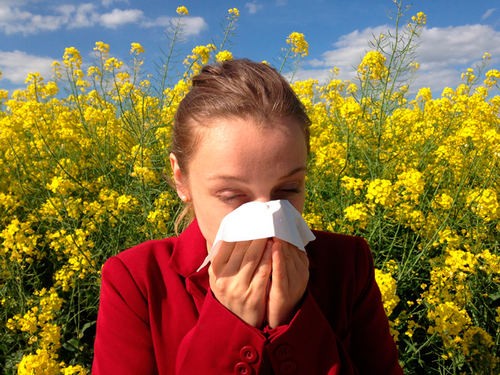Whether you’re still recovering from Florence or from September 2017, the most active tropical storm month on record–you may be worried about mold in your home. If your home was damaged by floodwaters, you’ll need to take quick action to dry out your furniture, carpeting, and walls.
Too much moisture and standing water can be a breeding ground for mold, which could trigger breathing problems or contribute to an infection. But even if your home hasn’t been damaged in a hurricane or flood, you likely still have mold in your house.
In fact, mold is everywhere. Even in the cleanest of homes, it’s impossible to eliminate entirely. Every time you open a window or go outside, mold can be ushered in through the air or by attaching itself to your clothing and shoes.
Once indoors, it can grow in the walls, carpeting, upholstery, and more. Truth is, mold is good at reproducing anywhere there is moisture; mold has existed for millions of years and has picked up a few survival tricks along the way.
Health symptoms that can be caused by mold in your house
Mold doesn’t bother everyone. In fact, out of thousands of mold species, only a few dozen will trigger any health problems at all, according to the Asthma and Allergy Foundation of America. Still, some of us are sensitive to molds. People who are allergic to an indoor mold can experience year-round symptoms like a sore throat, cough, stuffy nose, and more; for those who also have asthma, mold can trigger an asthma attack. People with a weakened immune system or a chronic lung condition like chronic obstructive pulmonary disease can develop a serious infection in the lungs if they’re exposed to mold.

People without allergies and asthma aren’t immune to the effects: In 2004, the Institute of Medicine concluded that people without pre-existing lung conditions can also experience symptoms like nasal congestion and a sore throat if they live in a house with damp floors or moisture accumulation.
What mold looks like
Molds are a type of fungus and can look like their fungal cousins, mushrooms and yeasts. Outdoors, molds can be seen gobbling up the dead organic matter on decomposing surfaces like fallen leaves and rotting logs; indoors, house mold thrives in wet, humid environments like bathrooms and basements or anywhere that has recently flooded. There are thousands of types of mold, and their appearance can vary depending on the type of mold and where it’s growing.
The most common indoor molds are Cladosporium, Penicillium, Aspergillus, and Alternaria, according to the Centers for Disease Control and Prevention (CDC). Black mold, or Stachybotrys chartarum (also known as Stachybotrys atra), is also sometimes found in homes and other buildings. This greenish-black growth can grow on fiberboard, paper, dust, and lint, particularly in areas that may have recently flooded or suffered other types of water damage. While black mold can certainly look scary, the CDC says that Stachybotrys chartarum isn’t any more harmful than other types of mold.
What mold smells like
Mold has a damp, musty scent-similar to what you’d smell after opening an old book. “In general, smell is not a good way to determine if there is a mold problem,” says Laureen Burton, a staff chemist and toxicologist for the Environmental Protection Agency (EPA). The smell of indoor molds can differ depending on the type of mold, the surface on which it’s growing, and its source of moisture. Plus, she says, some people don’t notice a smell at all.
The mold smell is caused by microbial volatile organic compounds (mVOCs), which are substances that are naturally produced by molds as they grow. “The health effects of inhaling mVOCs are largely unknown,” says Burton, “although exposure to some mVOCs has been linked to symptoms such as headaches, nasal irritation, dizziness, fatigue, and nausea.”
How to test for mold
You probably don’t need to do mold testing or buy a mold test kit, especially if the fungus is visible. Because the health effects of mold vary from person to person, the CDC says that if you can see it or smell it, it should be removed, no matter what type of mold is in your home.
While it’s not possible to completely eliminate mold in your house, you can prevent a build-up by cleaning up any wet or damp spots and fixing any existing water leaks. (All molds need water to live; they reproduce by releasing spores, or microscopic “seeds,” into the air that grow if they land on a damp surface.)
Neither the CDC nor the EPA recommends doing routine mold samplings-both organizations point out that there are no federal limits for mold in buildings, so people can’t check their apartment complex’s compliance with the law, for example. Plus, the testing can be expensive.
When you need to call an expert to eradicate mold
If the moldy area is small-it’s growing in an area that’s smaller than 3 feet by 3 feet-you can probably do a DIY cleanup. The CDC recommends wearing an N-95 respirator (found in hardware stores) and protective eyewear and gloves while handling mold. After you’ve fixed any plumbing leaks and cleaned up the water, you can scrub off the mold with a bleach solution made from no more than 1 cup of laundry bleach in 1 gallon of water.
If the water-damaged or moldy area is larger than 3 feet by 3 feet, you could also call in a professional. As there are no federal mold regulations, the CDC recommends finding a specialist who’s affiliated with or certified by the National Environmental Health Association, the American Industrial Hygiene Association, the Institute of Inspection, Cleaning, and Restoration Certification, or the American Council for Accredited Certification.
If you don’t see or smell mold but suspect it’s hidden-you know there has been water damage behind a wall or beneath a floor, for example-an experienced professional can also help find the source.



